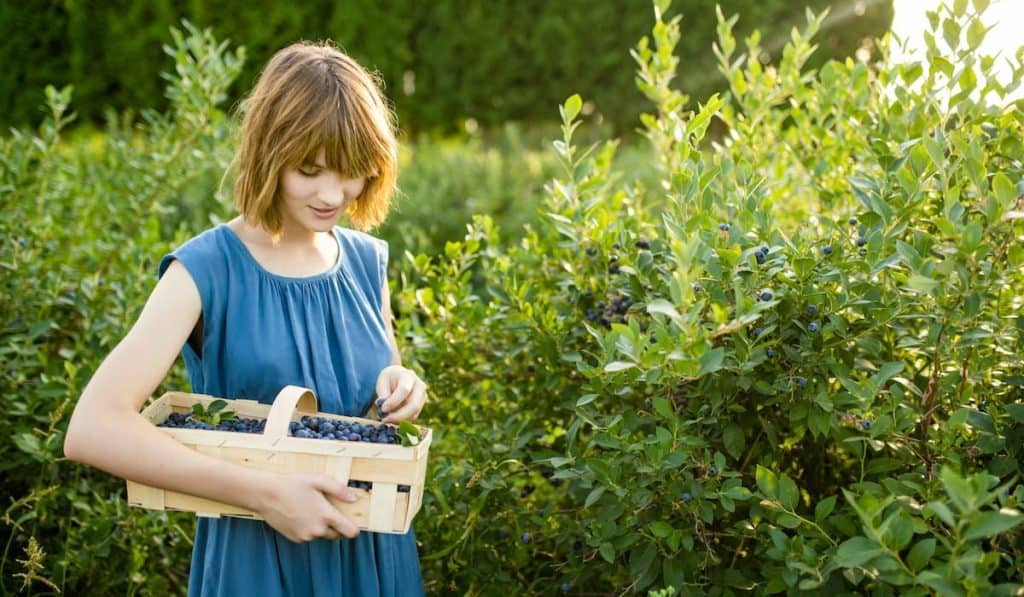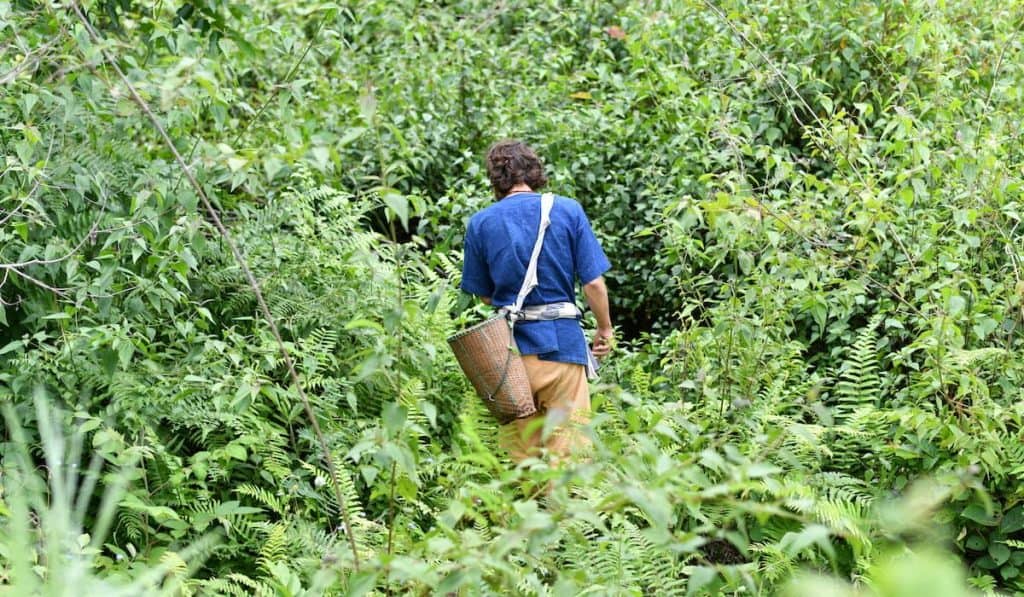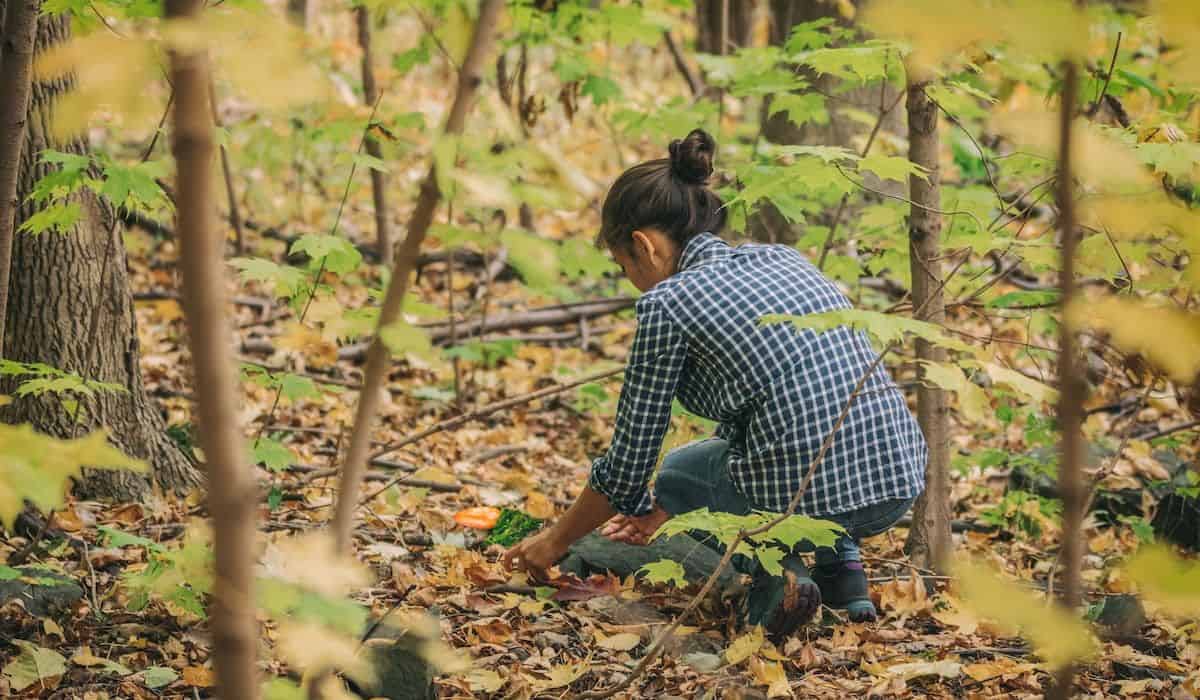Forage walks are walks in the city, woods, or countryside where you pick edible wild plants and fruits.
It’s a great way to get healthy food on a budget. Interested in foraging walks? Keep reading to find out more.
Why Go on Foraging Walks?
To find food
The outdoors play host to a variety of wild foods. When you go out foraging, you can get lots of wild nutritional food to add to your diet.
As a hobby
Taking long walks to satisfy your curiosity about plants is a great way to spend your free time (the food is a bonus).
It will help you relax and get in touch with nature, all while burning some extra calories.
You can even pick lots of pretty wildflowers to decorate your home or make lovely ornaments.
For medicinal purposes
Alternative medicine uses naturally growing herbs to treat different illnesses. You can go out to search for these healing plants.
As near as your backyard or as far as your legs can carry you, the earth is full of fabulous treasures ready for the taking.
Who Can Go for Forage Walks?
The young and the old alike can do this. More senior family members can go out with the younger ones to pass on age-old wisdom about plants.
You can go out as friends or make it a family outing. Or use the hunt as a great way to teach young children about nature.
However, the younger scavengers should always be in an adult’s company, and it’s best not to go too far with them.

How Do You Go Foraging?
If you’re new to the idea, it may seem a bit scary. You may be worried that you’ll pick the wrong plant or get mushroom poisoning.
But daunting as it may seem, with the right guide, you won’t have much to worry about.
- Gooley, Tristan (Author)
- English (Publication Language)
- 416 Pages – 07/31/2015 (Publication Date) – The Experiment (Publisher)
Get your equipment ready
To get started, you need to get the right equipment. You’ll need:
- A basket to put your stash. A paper bag won’t do; you don’t want to destroy or squish your harvest.
- A pair of gloves to protect your hands. Some plants like stinging nettle (as the name implies) will sting if you touch with bare hands.
- Clippers to remove flowers, leaves, or stems from plants without damaging them. Why not just pull with your hands? Well, it’s essential to protect the plants, so they keep producing more.
And as much you want to get these natural foods, you have to remember you’re not the only one. Other people and animals too, need to find food.
So, you have to maintain a quid pro quo with mother nature – be kind to it so that it can be kind to you.
Plus, it will be easier to clip a stem than to tug at it until it breaks off.
Know what you’re doing
Once you have what you need, the next step is in-depth research. Ask yourself:
- Which plants am I likely to find?
To find the plants growing in your area, you need to research the internet at your library and ask older people or other foragers.
Get as much information as you can about the types of plants in your area and the season they grow. Get the names down to the scientific title.
Know how the plants look, their smell, and texture.
In short, find out everything there is to know about the plant.
It’s also useful to study endangered plants, so you don’t unwittingly pick them.
- When do I find these plants?
Knowing the seasonal patterns helps to make your walks more fruitful. You’ll know what to expect and you’ll able to identify the plants better.
Where to Find Edible Foods
There’s no limit to where you can get fresh edible wild food. In your backyard on the sidewalk, in the parking lot, or woods.
The trick is to be on the lookout all the time. Keep your eyes open for any sign of greens when you go out to get the paper or taking a walk out – you could just score your next meal.
For a bigger score, here are some places you can go to gather.

Woodlots
Nature walks go to a whole other level when you throw foraging into the mix.
You get the chance to breathe in some fresh air and relax away from the hustle and bustle.
On top of that, you can find lots of interesting edibles out in the woods. You’ll have plenty of time to scrutinize the plants and pick the ones you like.
Just remember to be considerate; take only what you need and don’t destroy. The woods provide a home and food to lots of different animals, so keep that in mind.
Parking lots
Many leafy greens, flowers, and herbs grow in cracks or on the side of the walls in the parking lot.
Community gardens
Contact your local community garden and ask if you can help them weed out the area. Many useful herbs grow like weeds.
So, you’ll have access to a huge bounty, and you’ll be helping the garden – it’s a win-win for all.
The same goes for the gardens in your neighborhood. Ask if you can offer them a hand with their “weeds,” and you can get lots of good stuff.
Local parks
Contact the park’s overseers and ask if you can take care of their invasive plants and weeds for them. They should be more than happy for the extra hand.
Another great idea is to volunteer when they call out for a weeding day.
You’ll not only get the goodies, but you’ll also endear yourself to them (they’ll find it harder to say no in the future).
However, it’s not always legal to forage in some city or municipal parks. It’s best to get a handle on the laws that apply in your locality.
Look it up on a search engine, or simply ask the authorities. They’ll know which areas you’re allowed to scavenge in.
Land preserves
Talk to your local land trusts and preserves and see if you can get them to let you gather there.
If they do allow it, remember only to get the invasive plants. Preserves protect wild plants, so you don’t want to go overboard and destroy nature.
Local farms
If you are in a farm area, seek permission from the owners. You can get plenty of awesome plants and herbs from meadows.
You’ll also get access to great stuff on the fence rows.
Private land
Talk to land and property owners. Some won’t mind you digging around for food. They might even let you get fruits from the trees.
But you have to ask. You can’t trespass on people’s land, even if it’s just for the weeds.
Note: You must scavenge responsibly. If you’ve been allowed in the park or private land, don’t destroy it.
Take only what you need and avoid stomping on the other plant life.
Also, ask your host if they’ve sprayed any pesticides or other chemicals that could be harmful.
Near the farmer’s market
A lot of plants grow from seeds scattered from the farmers’ market.
Scour the area around; you may get a bumper harvest for your dinner table.

Foraging Guidelines
Be safe
When you go out on your gathering mission, remember to be safe. Put on a sturdy pair of shoes and protect yourself from the elements. Wear protective gear to avoid allergic reactions to plants.
On top of that, it’s always a great idea to go with a companion in case you run into any problems.
What’s more, stay away from high contamination areas like rail tracks and old houses.
Don’t guess
Never pick a plant on a guess. If you’re unsure what it is (even the most fleeting doubt), leave it.
Consuming the wrong plant can kill you – and that’s not figurative. Do as much research as you can.
Triple-check any sources to verify any information.
Most importantly, ask an expert or shadow an experienced forager for a while before doing it on your own.
What Can You Find on A Forage Walk?
Wild greens
Plenty of wild plants growing as weeds are great for cooking or making salads.
Here are a few examples:
- Wild dandelion (Taraxacum)
- Miner’s lettuce (Claytonia perfoliata)
- Wood sorrel (Rumex acetosa)
Wild nuts
You can harvest some naturally growing nuts like groundnuts and pine nuts to use in salads or add flavor to meals.
Wild fruits
You can get lots of tasty fruits and berries from wild trees. Like brambles, wild strawberry, or juneberries.
Most of them will have a great aroma and taste. You can eat the fruits directly off a tree or make jam, pickles, or pies.
However, remember to confirm the identity of any fruit before you eat.
Wild roots
Natural root tubers are a good source of carbohydrates and fiber.
You can find these in plants like Burdock root (Arctium) or Prairie Potato (Psoralea esculenta)
Wild mushrooms
Plenty of edible fungi grows naturally. You’ll find mushrooms like Morel (Morchella), Chanterelle (Cantharellus), and lots more.
You have to be more than careful with mushrooms. Many variants are immediately toxic with fatal results.
It’s usually not a good idea to look for mushrooms as an absolute beginner.
Are Forage Walks Dangerous?
They shouldn’t be; if anything, it should be a relaxing stroll that coincidentally brings home dinner.
It’s a great way to connect with friends and family or make new friends.
However, there is a certain element of danger involved. You can come across bears, snakes, or other animals out in the wild.
So, you’ll need to be prepared and extra vigilant. And don’t stray too far.
Final Words
Forage walks are a great way to enjoy the outdoors, collect delicious plants to eat, and get natural medicines.
You can find a lot of wild plants in the urban areas or the countryside. The walks are safe, provided you take precautions and do your research before you go out.
Happy foraging!





